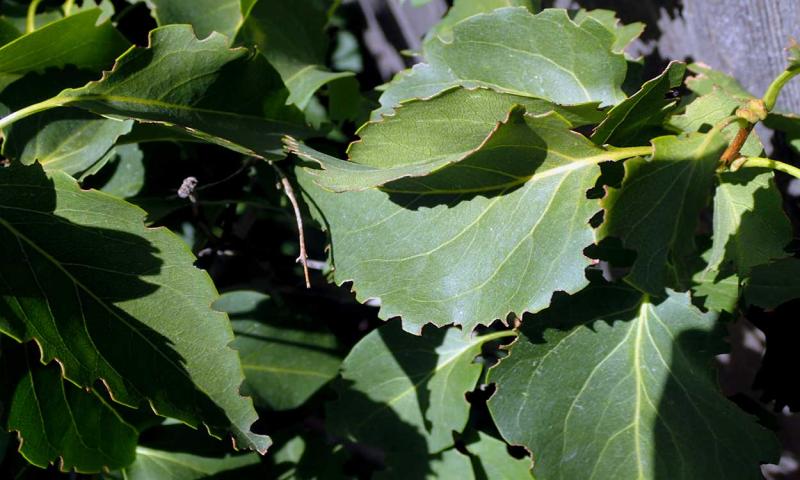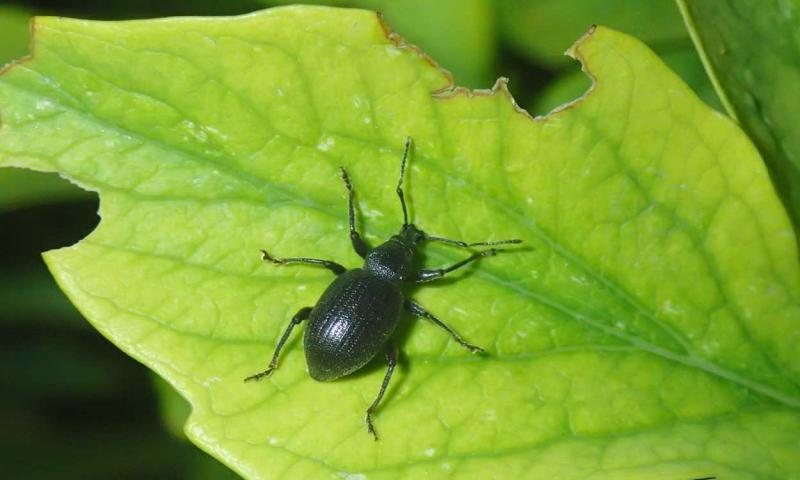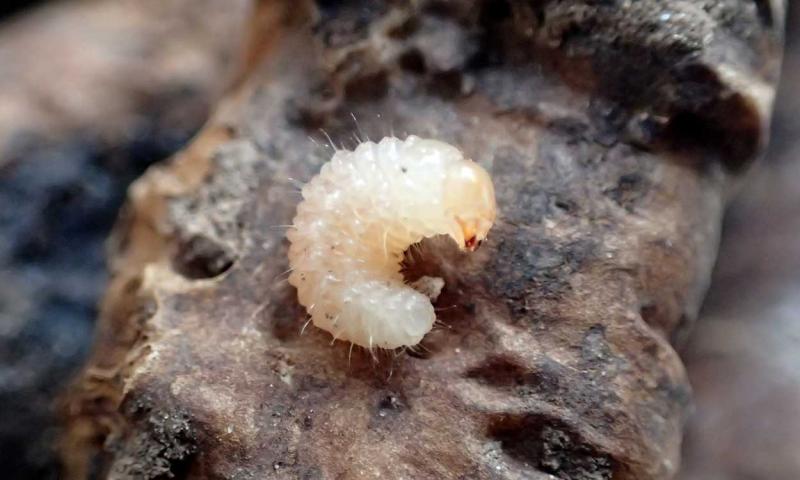
There have been multiple reports of mysterious defoliation occurring on lilac bushes. Most of these reports have been West River, especially in the Rapid City area. The defoliation is often described as notches showing up around the edges of the leaves, resembling the edge of a saw blade (Figure 1).
This notched feeding pattern is caused by root weevils. Root weevils are rarely observed feeding because they feed at night and hide during the day.
There are several root weevil species present in South Dakota. Common culprits include the lilac root weevil (Otiorhynchus meridionalis), strawberry root weevil (O. ovatus), rough strawberry root weevil (O. rugostriatus), and black vine weevil (O. sulcatus).
Profile

Adult root weevils are about 1/3 of an inch long and black in color. Like all weevils, they have a characteristic snout that sticks out at the front of their head (Figure 2). The larvae are pale and legless grubs with an orange or tan head capsule (Figure 3).
Adults emerge in the spring and remain active for the duration of the summer. They lay their eggs in the soil at the base of their host plants. The eggs hatch and the larvae move to the roots, where they feed until colder weather sets in. The larvae overwinter at the base of the plants, pupate the following spring, and emerge as new adults.
Root weevils only have one generation per year. They are also flightless, so they typically stay in one area and don’t travel very far.
Management

Root weevil management is often unnecessary as they only cause cosmetic injury to plants. However, there are several pyrethroid insecticides labeled for root weevils that may reduce their populations.
To manage root weevils for the following year, beneficial nematodes can be drenched into the soil around infested plants to eliminate the developing larvae. Beneficial nematodes are commercially available and should be applied in late summer or early fall.
The adult root weevils are also often noticed because they find their way indoors. They do not feed or reproduce indoors, and, since they do not fly, they are easy to remove by hand. It is not necessary to apply an insecticide indoors to manage roots weevils.


